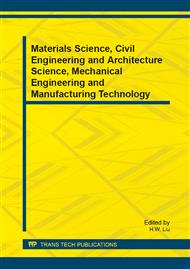p.774
p.778
p.782
p.786
p.790
p.795
p.799
p.803
p.809
Static Strength of RHS T-Joints with Reinforced Chord under In-Plane Bending Load
Abstract:
Welded tubular structures are widely used in many constructions, such as offshore platforms, which are all consisted of welded tubular members. There is a stress concentration at the intersection between chord and brace. When subjected to loads, a crack exists in the weld toe at the intersection. Then the propagation of the crack leads to failure of the joint. So the static strength of rectangular hollow section (RHS) T-joints with local chord reinforcement under in-plane bending load is investigated by using finite element method. To study the effect of the chord reinforcement of a RHS T-joint, overall 18 T-joint models with different chord reinforcements have been analyzed numerically. This paper presents the results of a detailed parametric study of the static strength of in-plane bending loaded tubular T-joints with reinforced chord. The study, carried out using non-linear finite elements, demonstrated the accuracy of the finite element analysis to investigate the effects of different geometric parameters which influence the static strength of the stiffened joints. It is found that the effect of the chord thickness near the intersection is significant in improving the ultimate capacity of T-joint models. The ultimate strength enhances as the length of the chord reinforcement becomes longer and the chord wall thickness becomes larger. The effect of the chord wall thickness on the static strength of T-joints are remarkable. However, increasing the length of the reinforced chord to improve the static strength of Tubular T-joint is relatively ineffective.
Info:
Periodical:
Pages:
790-794
Citation:
Online since:
January 2014
Authors:
Price:
Сopyright:
© 2014 Trans Tech Publications Ltd. All Rights Reserved
Share:
Citation:


